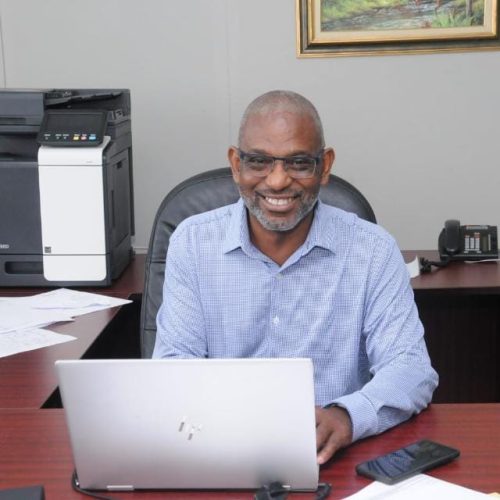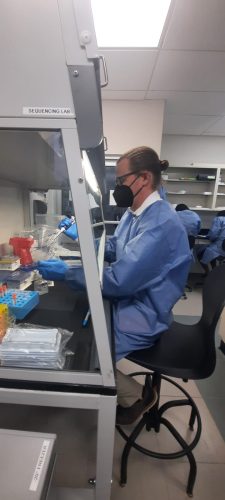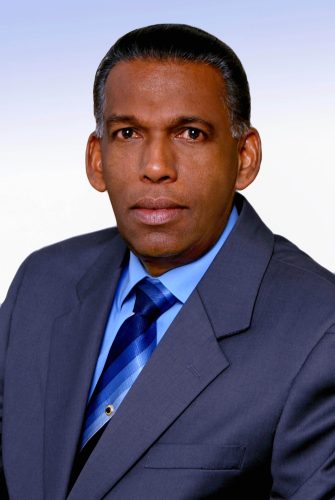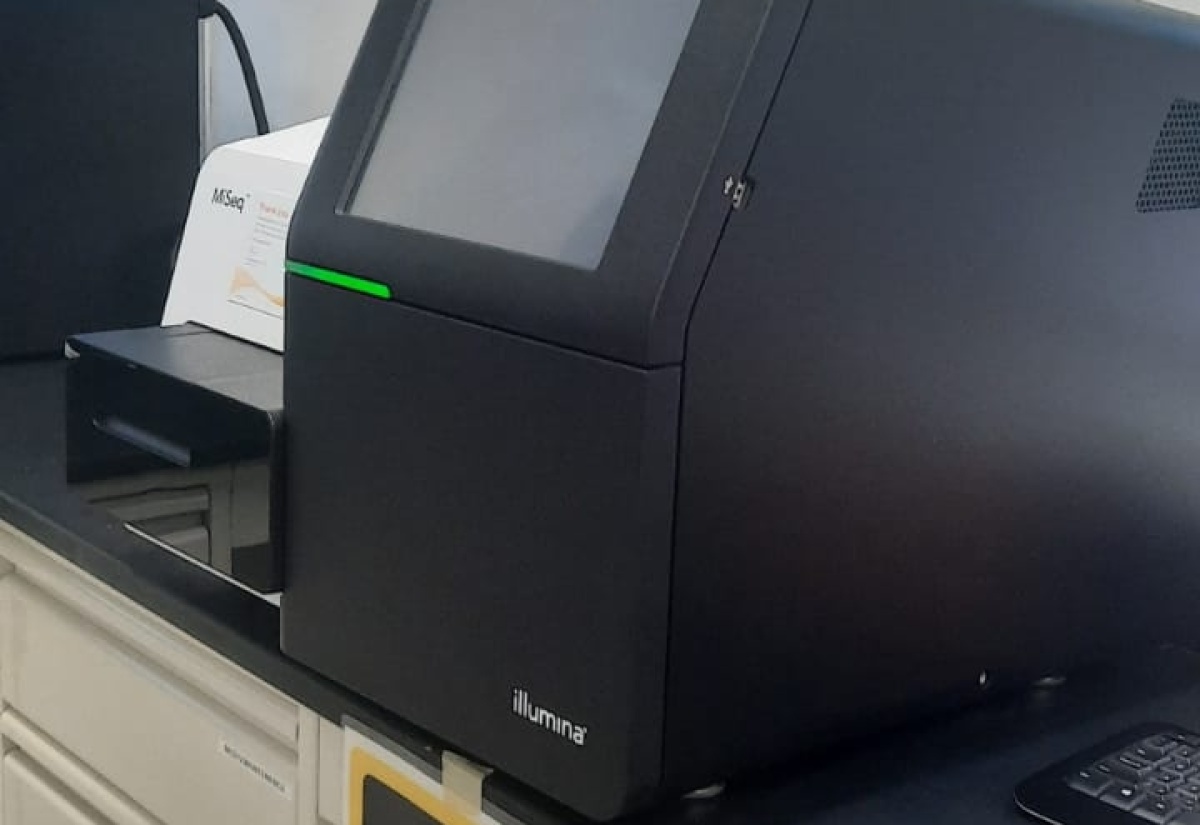New Genome Sequencing Machine Strengthens Region’s Capacity To Test For New Variants
By: , March 4, 2022The Full Story
The new genome sequencing machine acquired through support from the CHASE Fund should strengthen the region’s capacity to test for new variants of the coronavirus (COVID-19).
Before the machine was sourced, samples were sent to Trinidad for testing, being the only other Caribbean country at the time with a genome sequencer. This meant that Jamaican samples were queued behind the many others submitted for testing from other countries.

Chairman of the Department of Microbiology, Professor of Parasite Epidemiology and Consultant Parasitologist at the University Hospital of the West Indies (UHWI), Professor John Lindo.
Chairman of the Department of Microbiology at the University Hospital of the West Indies (UHWI), Professor John Lindo, says the genome sequencer has more than enough capacity to offer services to other countries.
“Right now, because we are catching up we are spending a lot of time going through our own samples, but as time goes on, we will be able to offer this service to other countries so they don’t have to duplicate this service. Of course, we are all part of CARICOM; the data will flow through CARICOM or other networks, such as PAHO, so we are in a very strong position to support other countries with genome sequencing,” he tells JIS News.
To understand why the genome sequencer is so important in the fight against COVID-19, this is how it works.
A genome sequencer is a machine that comes with other supplementary pieces of equipment and is used to track genetic variation in pathogens.
The sequencing process helps scientists understand changes in the genetic makeup of an organism or cell type, which gives pointers on how diseases are formed and on how to diagnose and treat them. Professor Lindo, who is also Professor of Parasite Epidemiology and Consultant Parasitologist, explains that in COVID-19, the genome sequencer is used to look for variants, but it can do more than that. “The sequencer can look at the genetic makeup of organisms, whether the entire organism, part of their genetic material or part of their RNA or DNA, and how the nucleotides are laid out. The sequencer can discover new causes of infection. For example, if a new pathogen arrives in Jamaica, we’ll be able to tell by using next-generation sequencing,” he explains Next-generation sequencing allows for the analysis and comparison of hundreds or thousands of DNA strands at a time. Currently, there is a core team of persons from the Virology Lab who have been assigned to the sequencing service. “The team does sample preparation and running of PCRs, before the sequencing process begins. There is an 87-step process before the samples get onto the machine. After getting off the machine there is the data interpretation called bioinformatics, which is another specialist area,” Professor Lindo says.

Senior Lecturer and Consultant Virologist at the University Hospital of the West Indies, Dr. Joshua Anzinger, extracting samples for sequencing.
The genome sequencer, which arrived in October 2021, is valued at roughly $40 million.
Professor Lindo notes that the CHASE Fund has been a long-time partner of the University of the West Indies (UWI) and the UHWI, not only in genome sequencing but also in Laboratory strengthening.
“I really want to thank the CHASE Fund for making this massive investment in the genome sequencing service. Their input goes beyond buying the very expensive machine to buying supplementary equipment and also to supporting the service through the procurement of reagents and supplies,” he says. Professor Lindo also explains that the ability to carry out sequencing strengthens the global effort to fight COVID-19, as tracking the spread of variants is critical to vaccine development. “Next Generation Sequencing gives us targets for therapy, so the people who are developing sequences, for example, can use the sequences we upload as vaccine targets or targets for drugs. In terms of the control of COVID-19, we can use the service to see what variants we have, how they are spreading locally and where we should put our resources and to make predictions about how bad our epidemics will be. The Ministry of Health and Wellness can make the decision based on this data,” he says. Health and Wellness Minister, Dr. the Hon. Christopher Tufton, says the Ministry welcomes the support of CHASE in significantly strengthening the island’s disease surveillance capacity. “The genome sequencer will help Jamaica to rapidly identify and care for cases of COVID-19, identify variant strains of the virus, trace and quarantine contacts and monitor disease trends over time. Ongoing surveillance for COVID-19 is also essential to understanding long-term epidemiological trends, such as incidence of mortality among different age groups, which population groups are at higher risk for severe diseases and death and potential epidemiological changes over time,” he says. Minister Tufton reiterates how the genome sequencer is a vital part of the island’s COVID-19 response.

Chief Executive Officer of the Culture, Health, Arts, Sports and Education (CHASE) Fund, William “Billy” Heaven.
“COVID-19 remains a clear and present danger to Jamaica, and we must persist in our efforts to prevent severe illness, hospitalisation and death associated with this disease. With this in mind, the Ministry of Health & Wellness would like to thank the CHASE Fund for responding to the call and offering support, as collaboration and partnership remains a hallmark in excellent public health,” he says. Chief Executive Officer at the CHASE Fund, Billy Heaven, says support for the effort in managing the spread of COVID-19 began with the purchase of two nucleic extractor machines for the UHWI at the National Influenza Centre. “These are the machines that they use to test for the presence of the coronavirus in individuals. These are also called RNA machines and they are the gold standard for doing this test. We spent $34 million to purchase the machine and its accessories and the machines are fully functional,” Mr. Heaven notes. He says that sourcing the genome sequencing machine, which was used to detect the presence of the Omicron variant in Jamaica, was a worthwhile partnership. “We’ve been working with UHWI and UWI for many years. They have access to other human resources and technical skills and we were able to get the technical input from abroad in terms of training for the use of the machine. Importantly, the use of the machine is not limited to the sequencing of coronavirus variants. It can also be used for other viruses. This means it will not become obsolete and will continue to be of service to the nation for years to come,” Mr. Heaven adds.


